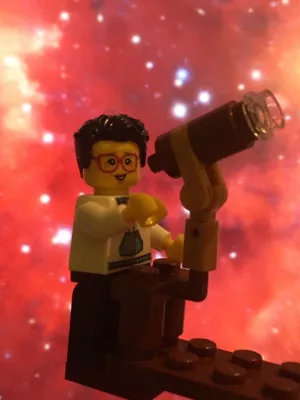
Jens Hoeijmakers
ASSOCIATE SENIOR LECTURER

Titanium oxide and chemical inhomogeneity in the atmosphere of the exoplanet WASP-189 b
Author
Summary, in English
The temperature of an atmosphere decreases with increasing altitude, unless a shortwave absorber that causes a temperature inversion exists. Ozone plays this role in the Earth’s atmosphere. In the atmospheres of highly irradiated exoplanets, the shortwave absorbers are predicted to be titanium oxide (TiO) and vanadium oxide (VO). Detections of TiO and VO have been claimed using both low-, and high- spectral-resolution observations, but subsequent observations have failed to confirm these claims or overturned them. Here we report the unambiguous detection of TiO in the ultra-hot Jupiter WASP-189 b using high-resolution transmission spectroscopy. This detection is based on applying the cross-correlation technique to many spectral lines of TiO from 460 to 690 nm. Moreover, we report detections of metals, including neutral and singly ionized iron and titanium, as well as chromium, magnesium, vanadium and manganese (Fe, Fe+, Ti, Ti+, Cr, Mg, V, Mn). The line positions of the detected species differ, which we interpret as a consequence of spatial gradients in their chemical abundances, such that they exist in different regions or dynamical regimes. This is direct observational evidence for the three-dimensional thermochemical stratification of an exoplanet atmosphere derived from high-resolution ground-based spectroscopy.
Department/s
- Lund Observatory - Undergoing reorganization
Publishing year
2022-01-27
Language
English
Pages
449-457
Publication/Series
Nature Astronomy
Volume
6
Issue
4
Document type
Journal article
Publisher
Nature Publishing Group
Topic
- Astronomy, Astrophysics and Cosmology
Status
Published
ISBN/ISSN/Other
- ISSN: 2397-3366

